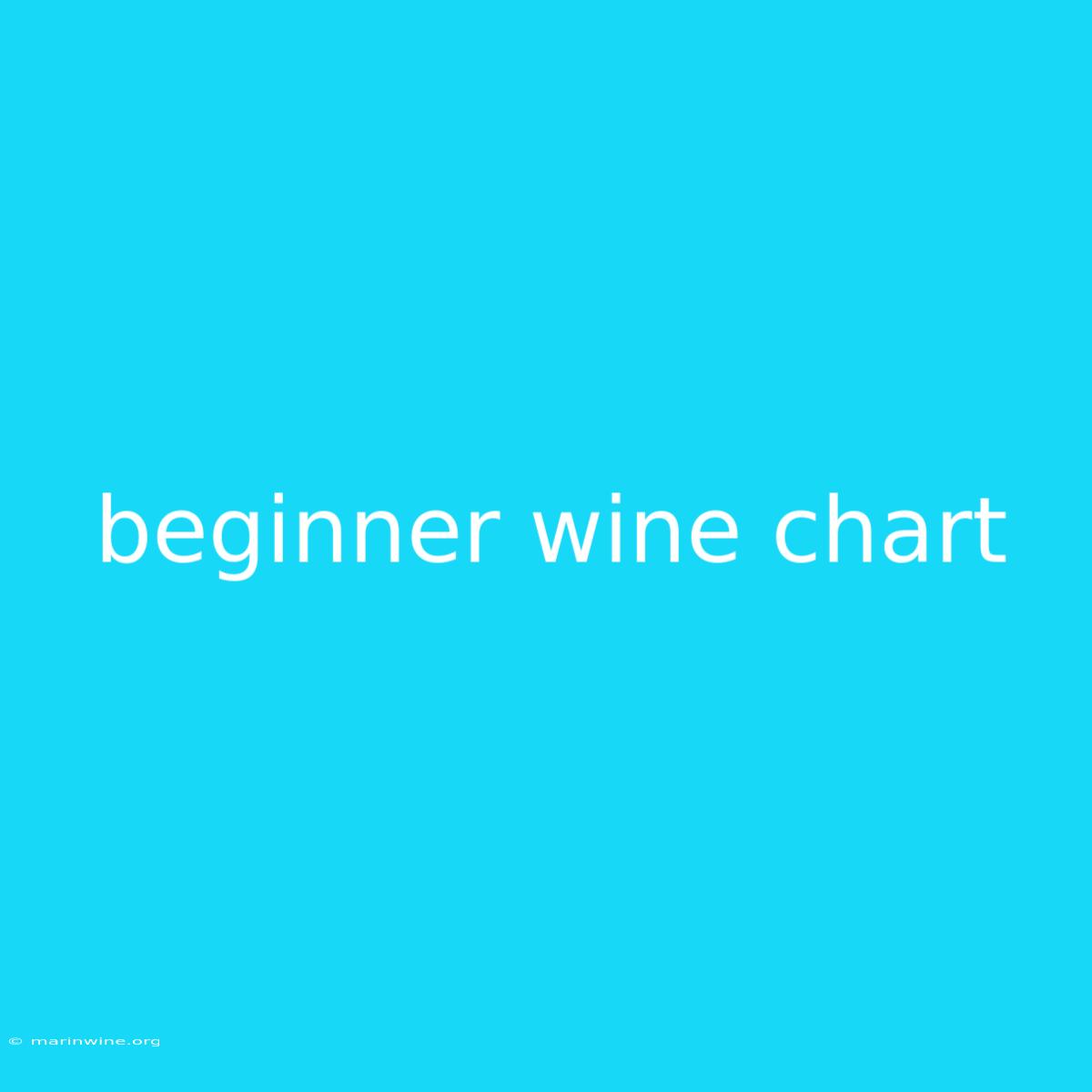Uncorking the Mystery: A Beginner's Wine Chart Guide
Have you ever felt overwhelmed by the vast world of wine? It doesn't have to be confusing! This beginner's wine chart guide simplifies the process, offering a roadmap to navigate the exciting realm of vintages.
Why This Matters: Understanding the fundamentals of wine can elevate your dining experience, enhance your knowledge, and spark engaging conversations with fellow wine enthusiasts.
Key Takeaways of Wine Chart
| Feature | Explanation |
|---|---|
| Wine Types | Red, White, Rosé, Sparkling |
| Grapes | Cabernet Sauvignon, Chardonnay, Pinot Noir, Sauvignon Blanc |
| Regions | Bordeaux, Burgundy, Tuscany, Napa Valley |
| Tasting Notes | Fruity, Spicy, Earthy, Floral, Oaky |
| Pairing | Food pairings based on flavor profiles and acidity |
Wine Chart: Decoding the Basics
Understanding the foundation of a wine chart is essential for beginner wine enthusiasts. Here, we delve into the key elements, providing a clear path towards wine exploration.
1. Wine Types:
- Red Wine: Made from red grapes and known for their robust flavors, tannins, and darker hues.
- White Wine: Made from white grapes and characterized by light and refreshing flavors.
- Rosé Wine: Made from red grapes with minimal skin contact, resulting in a pink hue and a balance of fruitiness and dryness.
- Sparkling Wine: Made with the addition of bubbles, often associated with celebratory occasions.
2. Grape Varieties:
Red Grapes:
- Cabernet Sauvignon: Full-bodied with notes of blackcurrant, cassis, and cedar.
- Merlot: Medium-bodied with notes of plum, cherry, and chocolate.
- Pinot Noir: Light-bodied with notes of strawberry, raspberry, and spice.
White Grapes:
- Chardonnay: Full-bodied with notes of apple, pear, and vanilla.
- Sauvignon Blanc: Medium-bodied with notes of citrus, grass, and gooseberry.
- Riesling: Light-bodied with notes of honey, apricot, and lime.
3. Wine Regions:
- Bordeaux, France: Renowned for Cabernet Sauvignon and Merlot-based blends.
- Burgundy, France: Known for Pinot Noir and Chardonnay.
- Tuscany, Italy: Famous for Sangiovese-based wines like Chianti.
- Napa Valley, USA: Home to diverse grape varieties and high-quality wines.
4. Tasting Notes:
- Fruity: Flavors of fruit, such as cherry, plum, or citrus.
- Spicy: Notes of pepper, cinnamon, or cloves.
- Earthy: Flavors of soil, mushrooms, or forest floor.
- Floral: Hints of rose, violet, or lavender.
- Oaky: Flavors derived from aging in oak barrels.
5. Food Pairings:
- Red Wines: Pair well with red meat, game, and cheese.
- White Wines: Complement seafood, poultry, and salads.
- Rosé Wines: Versatile pairing for a range of dishes.
- Sparkling Wines: Excellent for appetizers, light meals, and celebrations.
Navigating the Wine Chart: Unveiling the Flavors
Using a wine chart is a journey of discovery, a quest to uncover the unique flavors of each bottle. Start with your preferred flavor profiles, exploring wines that align with your taste buds.
- Fruity: If you enjoy sweet and refreshing notes, delve into Riesling or Zinfandel wines.
- Spicy: For bold and complex flavors, explore Syrah or Cabernet Sauvignon.
- Earthy: If you appreciate deep and earthy flavors, seek out Pinot Noir or Nebbiolo.
Remember, a wine chart is your personal guide, allowing you to customize your wine journey based on your preferences.
Unraveling the Mystery: A Wine Chart FAQ
Here are some common questions answered for your wine journey:
- Q: How do I choose a wine for my meal?
- A: Consider the dish's flavor profile, acidity, and texture. A lighter wine often pairs well with lighter dishes, while bolder wines complement richer flavors.
- Q: What does "dry" and "sweet" mean in wine?
- A: "Dry" refers to the absence of sweetness, while "sweet" indicates the presence of residual sugar.
- Q: How should I store wine?
- A: Store wine in a cool, dark place with minimal vibration. Most wines benefit from being stored horizontally.
- Q: What is the difference between a "vintage" and a "non-vintage" wine?
- A: "Vintage" wines are made from grapes harvested in a specific year, while "non-vintage" wines are blends from multiple vintages.
- Q: What is the best way to serve wine?
- A: Red wines should be served slightly chilled, while white wines are best enjoyed chilled. Sparkling wines should be served very cold.
- Q: How long should I keep a bottle of wine open?
- A: Opened bottles of wine can last anywhere from a few days to a few weeks, depending on the type of wine.
Tips for Enjoying Your Wine Chart Adventure:
- Explore New Regions: Venture beyond familiar wine regions to discover hidden gems and unique flavors.
- Attend Wine Tastings: Sample different wines and learn from wine experts.
- Talk to Wine Professionals: Engage with sommeliers and wine retailers for personalized recommendations.
- Experiment with Food Pairings: Create your own perfect wine and food pairings.
- Join a Wine Club: Access exclusive wines, discounts, and educational resources.
Summary by Wine Chart:
This beginner's guide to wine charts provides a roadmap for navigating the world of vintages. Explore different types, grapes, regions, and tasting notes to discover your personal favorites. Embark on your wine adventure and unlock the mystery of delicious aromas and flavors!
Closing Message: The world of wine is vast and exciting, ripe for exploration and discovery. With a little guidance and curiosity, you can navigate the wine chart with confidence and uncover your own personal preferences. Cheers to your journey!

